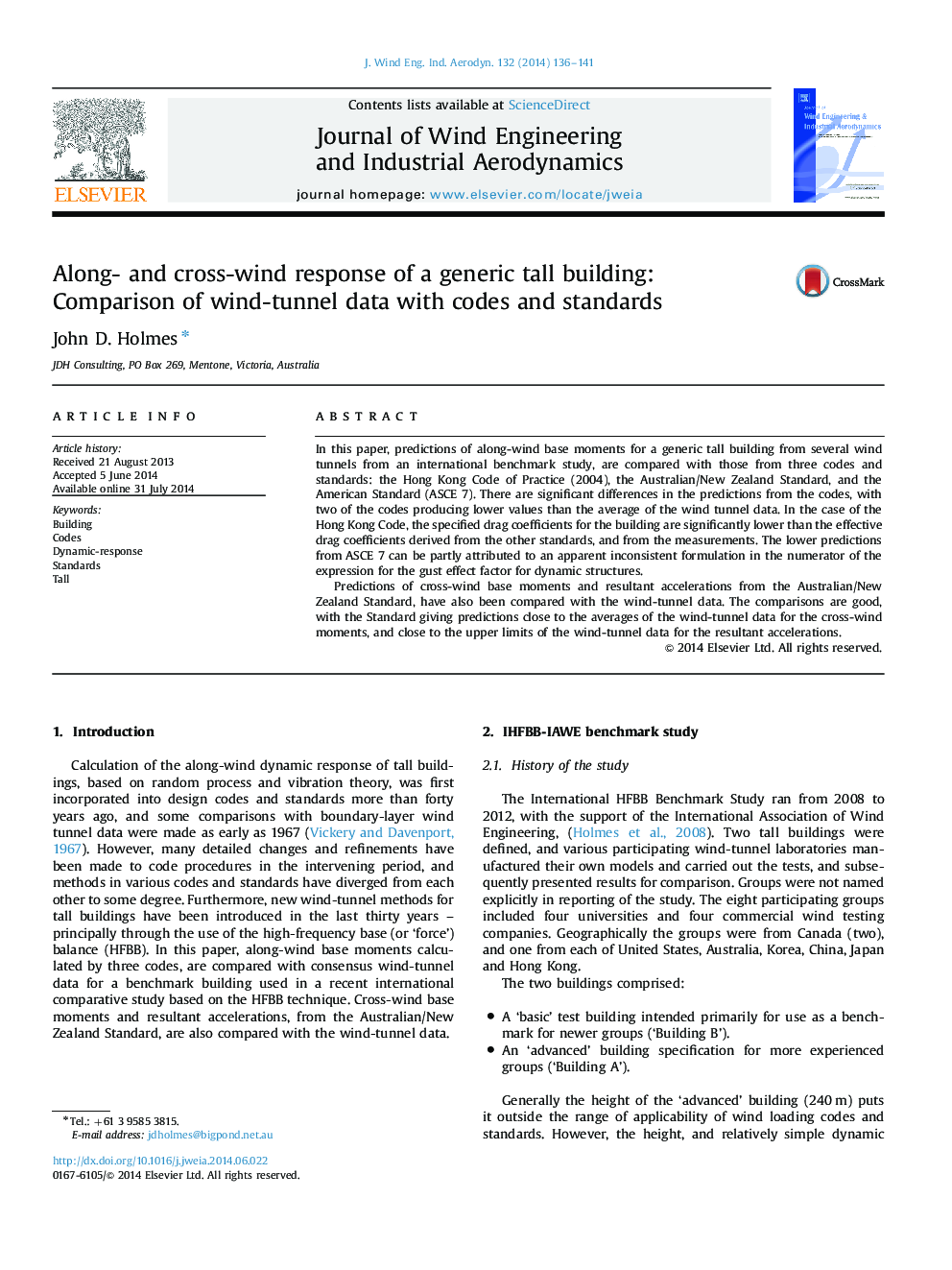| Article ID | Journal | Published Year | Pages | File Type |
|---|---|---|---|---|
| 292739 | Journal of Wind Engineering and Industrial Aerodynamics | 2014 | 6 Pages |
•Code predictions of dynamic response of a prismatic, unshielded, tall building vary considerably.•Only one standard gives acceptable (conservative) predictions of along-wind base moments.•One code gives specified drag coefficients that are too low by about 30%.•Cross-wind response and resultant acceleration predictions by one code are acceptable.
In this paper, predictions of along-wind base moments for a generic tall building from several wind tunnels from an international benchmark study, are compared with those from three codes and standards: the Hong Kong Code of Practice (2004), the Australian/New Zealand Standard, and the American Standard (ASCE 7). There are significant differences in the predictions from the codes, with two of the codes producing lower values than the average of the wind tunnel data. In the case of the Hong Kong Code, the specified drag coefficients for the building are significantly lower than the effective drag coefficients derived from the other standards, and from the measurements. The lower predictions from ASCE 7 can be partly attributed to an apparent inconsistent formulation in the numerator of the expression for the gust effect factor for dynamic structures.Predictions of cross-wind base moments and resultant accelerations from the Australian/New Zealand Standard, have also been compared with the wind-tunnel data. The comparisons are good, with the Standard giving predictions close to the averages of the wind-tunnel data for the cross-wind moments, and close to the upper limits of the wind-tunnel data for the resultant accelerations.
